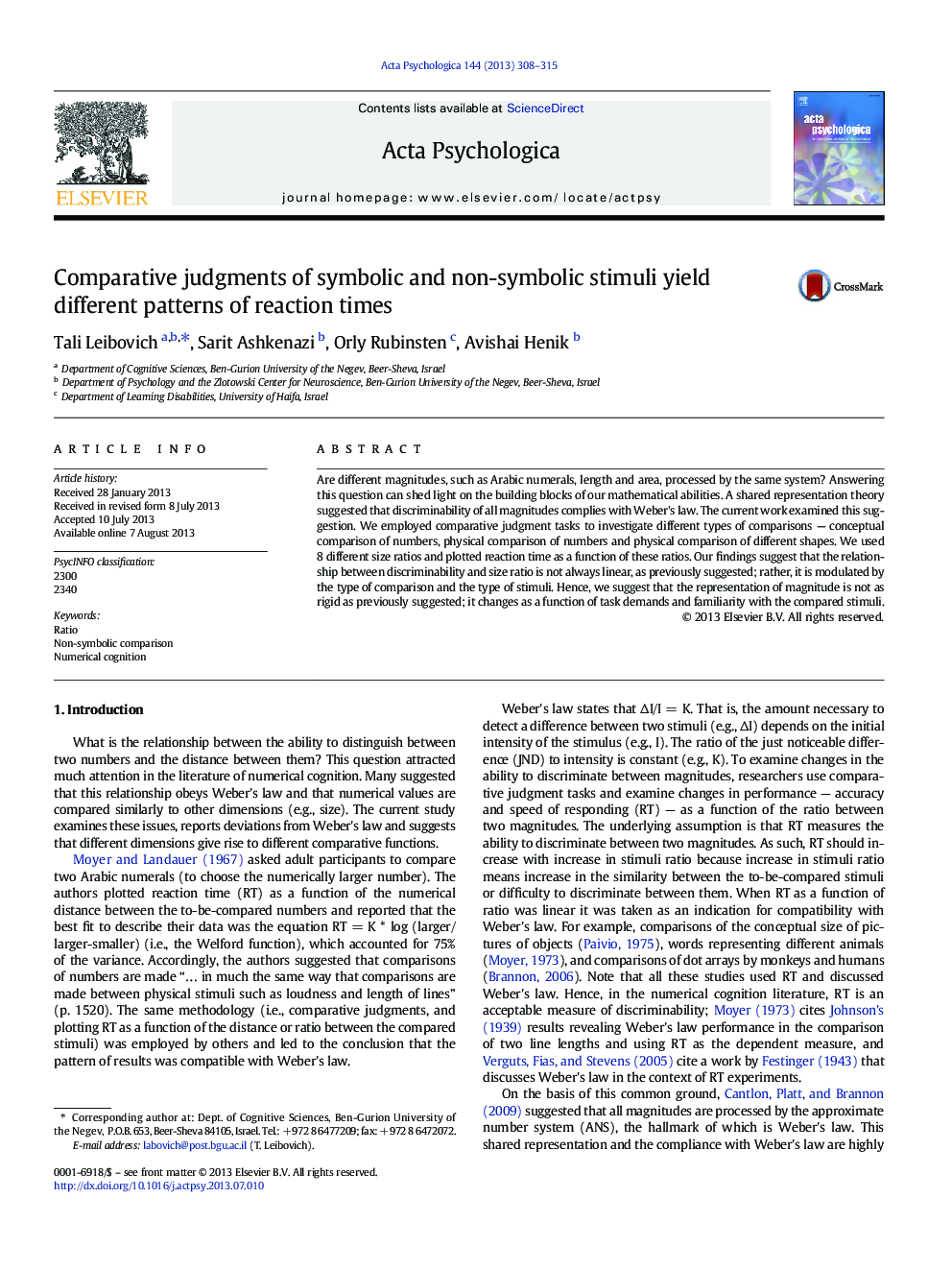| Article ID | Journal | Published Year | Pages | File Type |
|---|---|---|---|---|
| 10453777 | Acta Psychologica | 2013 | 8 Pages |
Abstract
Are different magnitudes, such as Arabic numerals, length and area, processed by the same system? Answering this question can shed light on the building blocks of our mathematical abilities. A shared representation theory suggested that discriminability of all magnitudes complies with Weber's law. The current work examined this suggestion. We employed comparative judgment tasks to investigate different types of comparisons - conceptual comparison of numbers, physical comparison of numbers and physical comparison of different shapes. We used 8 different size ratios and plotted reaction time as a function of these ratios. Our findings suggest that the relationship between discriminability and size ratio is not always linear, as previously suggested; rather, it is modulated by the type of comparison and the type of stimuli. Hence, we suggest that the representation of magnitude is not as rigid as previously suggested; it changes as a function of task demands and familiarity with the compared stimuli.
Keywords
Related Topics
Life Sciences
Neuroscience
Cognitive Neuroscience
Authors
Tali Leibovich, Sarit Ashkenazi, Orly Rubinsten, Avishai Henik,
